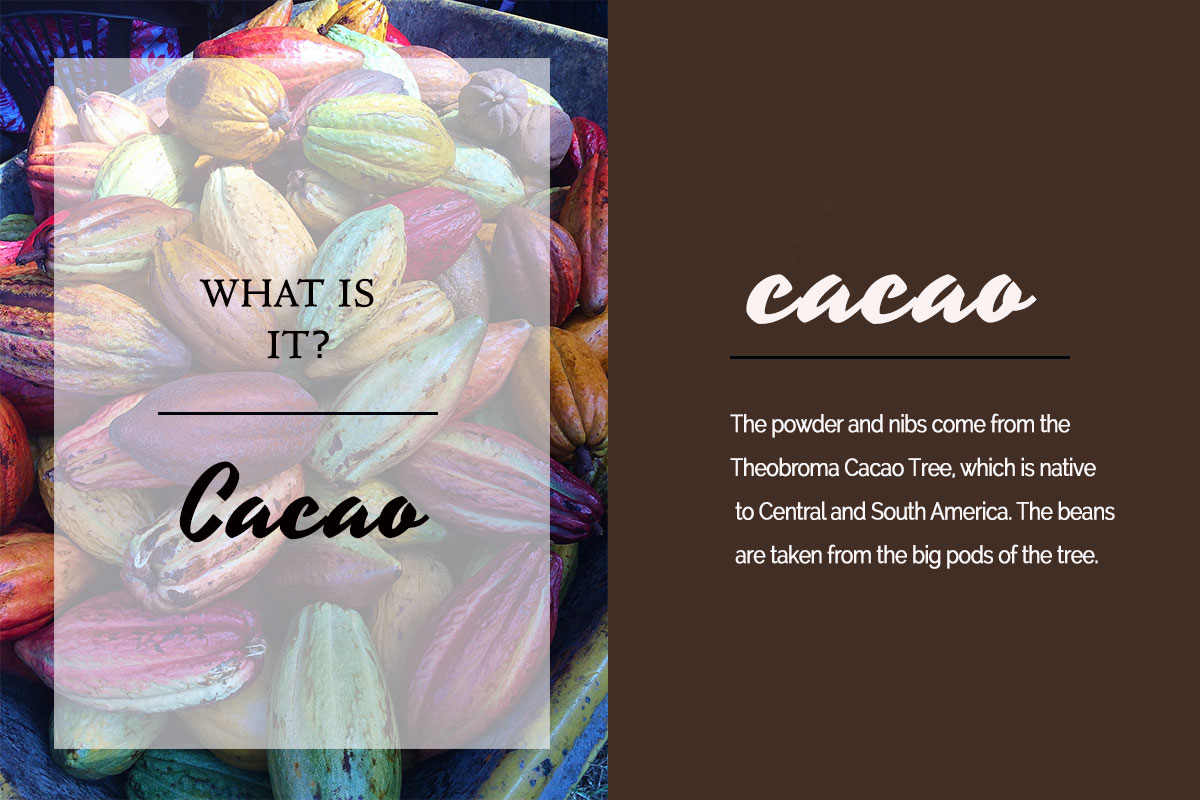Cacao

I am not chocolate obsessed like some friends of mine, but I do appreciate a piece of truly dark chocolate. In India it is difficult to find a bar that is not filled with sugar and compound, which is basically vegetable fat that is suppose to replace cacao butter. It is not very tasty and honestly no real chocolate. This is the reason why the opening of Mason & Co. was such a blessing. Their chocolate bar, with its 70 gram, is a treat that I allow myself from time to time (my favorite is peppermint and peanut butter). Now we have some new arrivals of sweet cacao nibs and drinking chocolate. I never tried out cacao nibs, not even knowing what they are for or how they are crafted. What is cacao really? And is it more than a sweet treat?
What is cacao?
Originally grown in Central and South America, cacao comes from the Theobroma Cacao Tree, where the beans can be found in its big fruits or pods. Cacao, not to be confused with cocoa, is left in its purest form having a high level of vitamins, minerals and micro nutrition. Cacao can be found in different forms. Most common are cacao nibs, which are roasted and cracked cacao beans and cacao powder.

What are the benefits?
Clearly the usual milk sugar chocolate is more a health threatener and a naughty treat while real milk and sugar free chocolate has actual health benefits. And now to top that, cacao nibs have an even higher nutritional value then dark bars because of their minimal processing. They have 40 times the antioxidants of blueberries to enhance the brain function, they have high levels of magnesium to keep your heart happy and pumping, they are packed with fiber for your digestion and they help you be full of happiness. Cacao contains the mood improver andamine – also known as the bliss molecule, boosting the feeling of wellness.

How to use it?
Think of the cacao nibs as a very dark chocolate, like a traditional form of it. You will find that the taste is similar but still different. Once you develop a taste for this bitter sweet snack you can just eat them as they are or sprinkle the nibs over your fruits, porridge or dessert. Mix them into your smoothies, use them in baking instead of nuts and add them to your trail mix (dried fruits and nuts).






